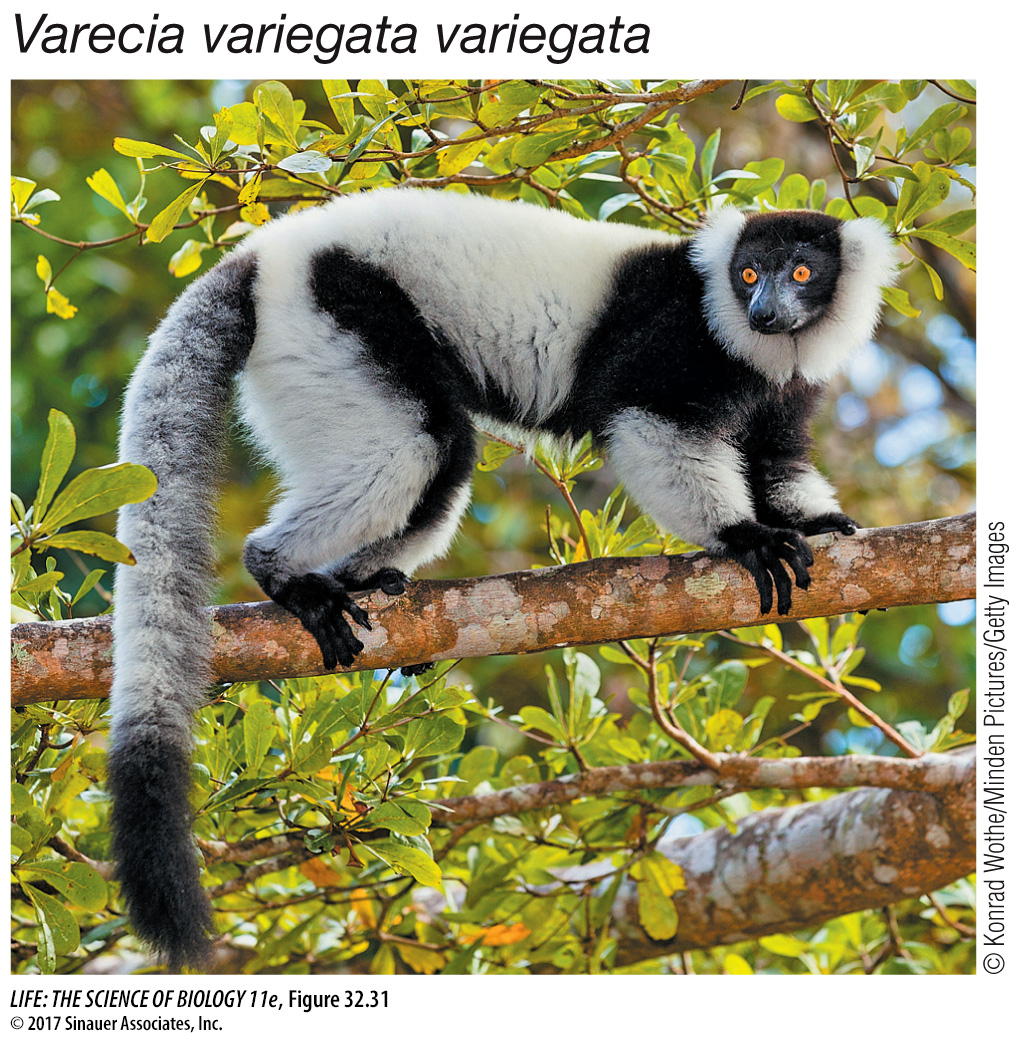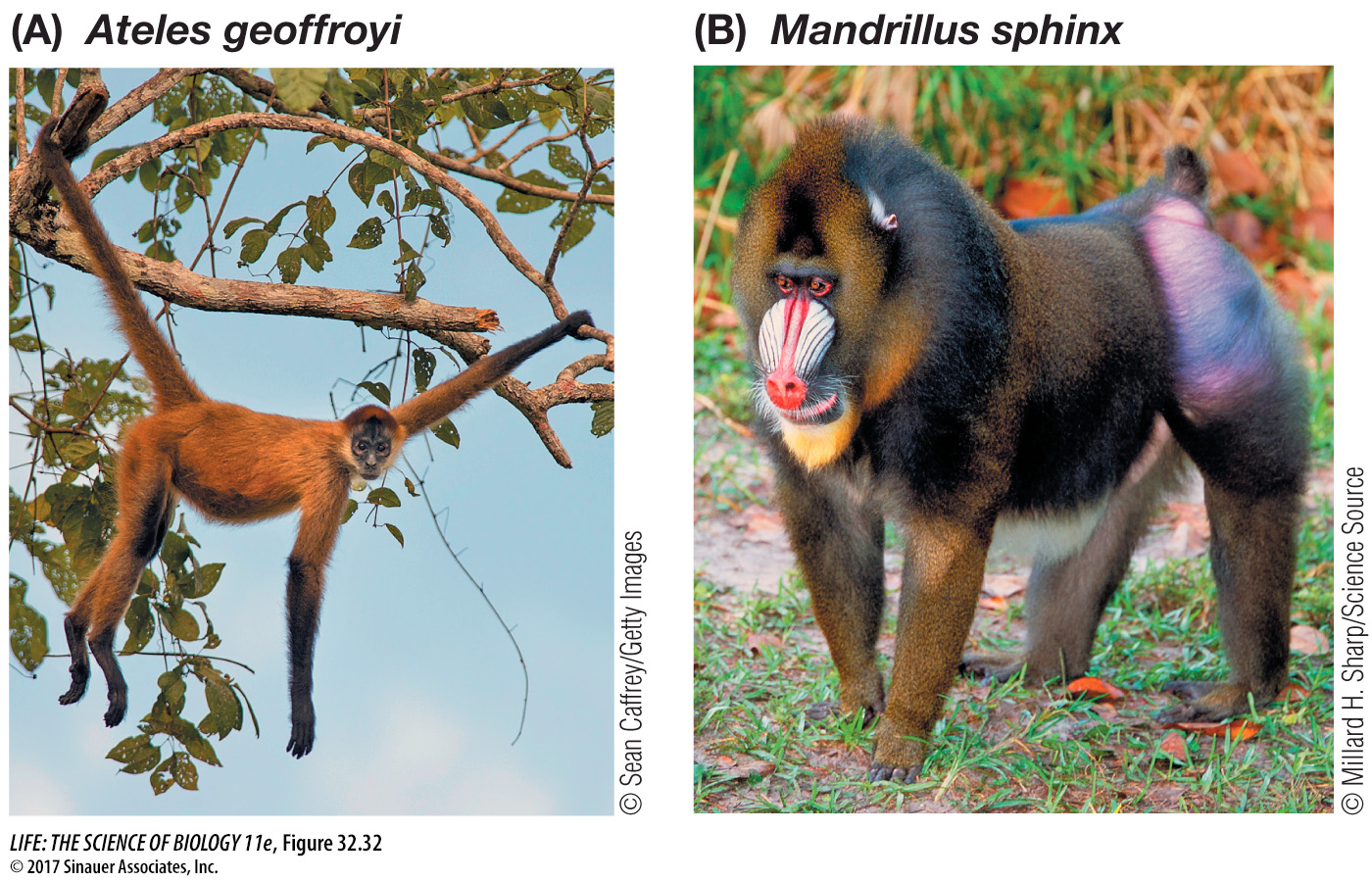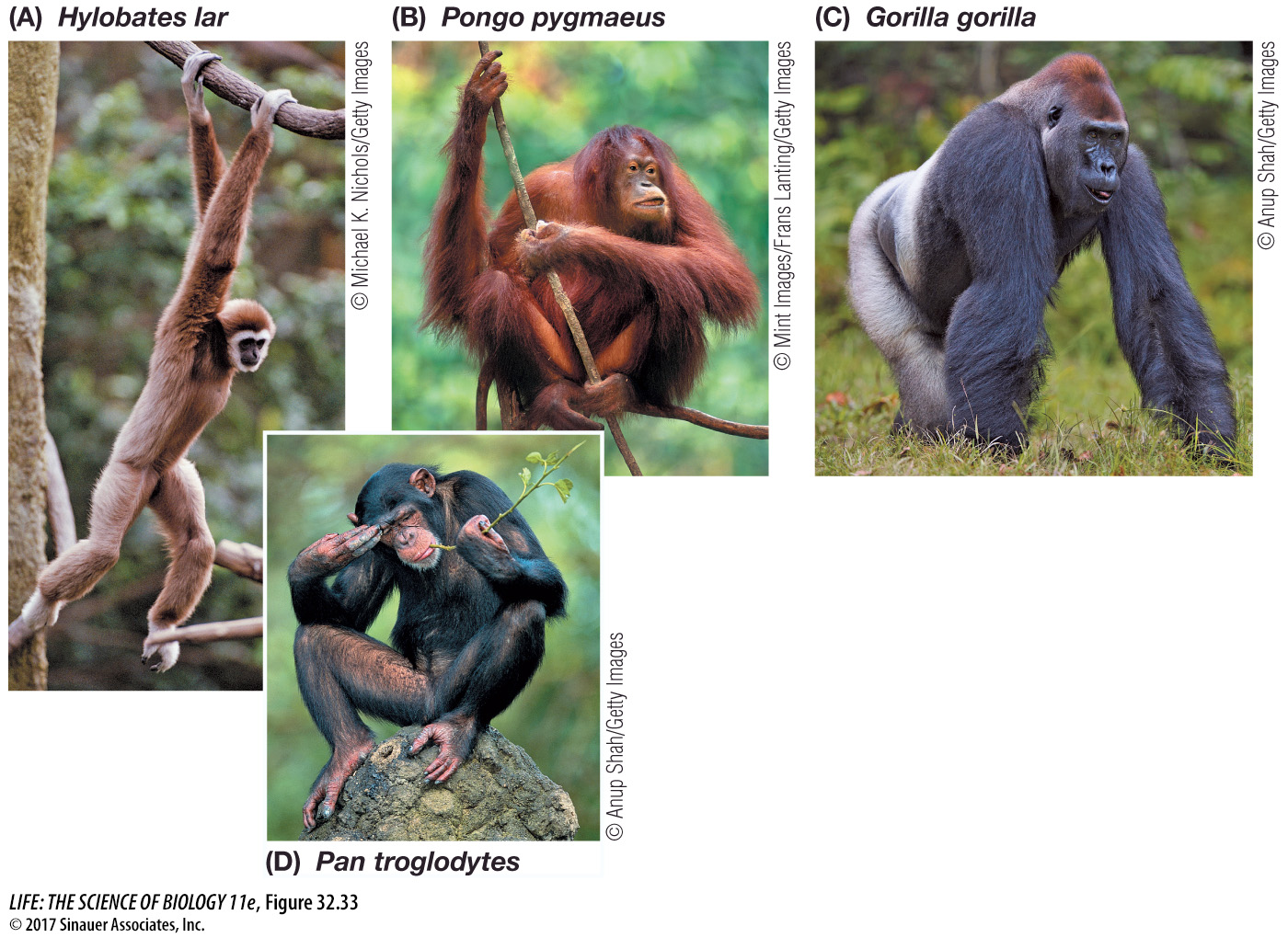Two major lineages of primates split late in the Cretaceous
About 90 million years ago, late in the Cretaceous period, the primates split into two clades: the wet-nosed primates (strepsirrhines) and the dry-nosed primates (haplorhines). Wet-nosed primates—lemurs, lorises, and galagos—once lived on all continents, but today they are restricted to Africa, Madagascar, and tropical Asia. All mainland wet-nosed primate species are arboreal and nocturnal. On the island of Madagascar, however, the site of a remarkable radiation of lemurs, there are also diurnal and terrestrial species (Figure 32.31). Tarsiers were once considered a part of this lineage as well, although today we know that they are more closely related to simians—monkeys and apes—than to lemurs, lorises, and galagos.

Figure 32.31 A Wet-Nosed Primate The diademed sifaka is one of the many lemur species found in Madagascar, where it is part of a unique assemblage of endemic plants and animals. Sifakas live in groups of up to a dozen animals and defend their territories.
The second primate lineage, the dry-nosed primates—tarsiers, New World monkeys, Old World monkeys, and apes—began to diversify shortly after the mass extinction event at the end of the Cretaceous, in Africa or Asia. New World monkeys diverged from Old World monkeys and apes slightly later, but early enough that they may have originated in Africa and reached South America when those two continents were still close to each other. New World monkeys now live only in South and Central America, and all of them are arboreal (Figure 32.32A). Many of them have a long, prehensile tail with which they can grasp branches. Many Old World monkeys are arboreal as well, but several species are terrestrial (Figure 32.32B). No Old World monkey has a prehensile tail.
Page 708

Figure 32.32 Monkeys (A) The spider monkeys of Central America are typical of the New World monkeys, all of which are arboreal. Note the prehensile (gripping) tail. (B) Although many Old World monkeys are arboreal, none has a prehensile tail. Many Old World monkey species, like this mandrill, are thoroughly terrestrial.
About 35 million years ago, a lineage that led to the modern apes separated from the Old World monkeys. Between 22 and 5.5 million years ago, dozens of species of apes lived in Europe, Asia, and Africa. The Asian apes—gibbons and orangutans (Figure 32.33A and B)—descended from two of these ape lineages. Orangutans are the closest living sister group of the modern African apes: gorillas (Figure 32.33C), chimpanzees (Figure 32.33D), and humans.
Page 709

Figure 32.33 Apes (A) The several genera of gibbons are all smaller in size than the other apes. Gibbons are found throughout Southeast Asia. (B) Orangutans are also native to Asia, living in the forests of Sumatra and Borneo. (C) Gorillas—the largest apes—are restricted to humid African forests. This male is a lowland gorilla. (D) Chimpanzees, our closest relatives, are found in forested regions of Africa.


